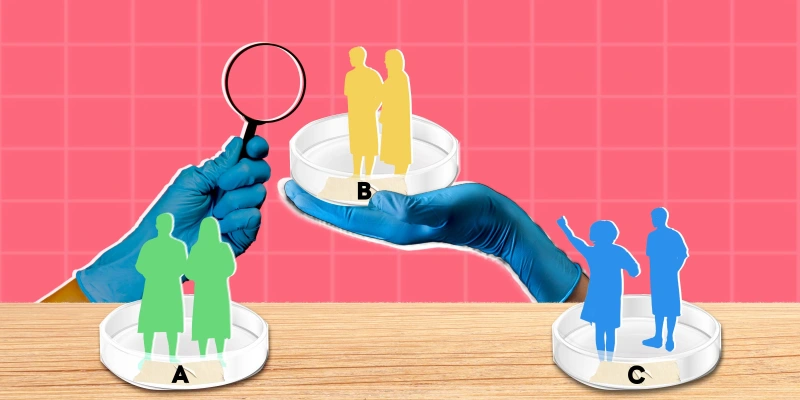I was almost done with my intern year of residency going about my night on call when Emma came in saying she was leaking large amounts of fluid. She was a teenager, and about 19 weeks pregnant. I had hoped it was just urine or maybe vaginitis, but when I gently placed a speculum into her vagina and saw a large pool of fluid, my heart sank. I did all the tests and confirmed that she had ruptured her membranes. A bedside ultrasound showed that there was no fluid around the baby, and there was still a regular heartbeat. She sat there looking very stoic in her hospital gown with her family next to her as I gave her the options: expectant management, induction of labor, or a dilation and evacuation.
She immediately said, “I want to do everything I can.” But I encouraged her to first listen to my counseling. We spent a long time discussing each option.
Expectant management would mean we would try to prolong the pregnancy until 34 weeks, and then we would induce labor, or go for a C-section depending on if her baby was head down or breech. She would go home, and come back to the hospital at 20 weeks for a course of antibiotics, and then again for an admission at 23 weeks for steroids to help mature the lungs, magnesium to help protect the brain, and fetal monitoring three times a day, with the expectation that we would do everything we could to deliver the baby safely if there were signs of fetal distress. In a very premature baby, that usually means a classical, or vertical incision, C-section delivery, which is safest for the baby, but carries with it maternal morbidity for future pregnancies. The neonatologist came for part of this discussion and talked about what it was like to care for a baby born very prematurely — the NICU stay, the risk of organ dysfunction, the risk of cerebral palsy.
We then moved on to discussing what an induction of labor would be like. How we would induce her, her options for pain control, the ability to bond with the baby after the birth, and whether it would still have a heartbeat.
And lastly, a dilation and evacuation. She would have to wait until the morning when an attending physician came on who performed this type of procedure. She would go to sleep in the OR while we cleared the pregnancy out of her uterus and removed any remaining tissue using a gentle suction device and perhaps some surgical instruments. She would be able to wake up and it would be over; she would not have to bear witness.
I left the room while Emma spoke with her family, and when I returned, she had decided to be induced into labor. She wanted to be able to bond with the baby after birth, take photos, and get footprints. We moved her into a labor room where she was induced with misoprostol pills placed vaginally to cause contractions. She had an epidural placed for her comfort. And a few hours later, she delivered a stillborn baby and placenta, surrounded by her loved ones. As she bonded with the baby and grieved with her family, it hit me that I had just performed my first abortion.
An important part of ob/gyn residency is learning to empty a uterus of a pregnancy at any gestational age. That can range from performing a suction D&C for a miscarriage at 6 weeks, to inducing a stillbirth at 26 weeks, to delivering a low risk term baby vaginally, to performing a breech C-section at 40 weeks. I have seen firsthand just how important learning how to safely empty a uterus at any gestational age can be in the setting of pregnancy and stillbirth complications, causing severe maternal morbidity and even mortality.
I have seen more pregnancy complications than I could have ever dreamt of. Yes, your run of the mill obesity, hypertension, and advanced maternal age. Diagnoses that would get someone extra ultrasounds through the maternal-fetal medicine office. But also, preterm premature rupture of membranes at 16 weeks, preeclampsia with severe features at 24 weeks, complex congenital heart defects, ruptured ectopic pregnancies, uterine rupture due to C-section scar pregnancies, and more. It is my responsibility as an ob/gyn to offer my patients comprehensive options for care, and leave the decision up to them. When we talk about abortion care in the media, everything becomes very polarized and focused on elective procedures performed. However, abortion care is an important part of being a comprehensive ob/gyn, even if doctors choose not to do elective procedures on an individual level. An uncomplicated vaginal birth is a retrospective diagnosis. The American College of Obstetrician Gynecologists advocates to “improve access to full-spectrum reproductive services, to integrate abortion as a component of mainstream medical care, and to oppose and overturn efforts restricting access to abortion.” Being unable to obtain an abortion has major effects on people’s lives, health, and well-being.
Emma may have been forced to deliver a baby without functioning lungs or kidneys, or many other significant medical issues if she did not have the right to choose what to do in the devastating circumstance of previable prelabor rupture of membranes. However, she did, and a few years later, she returned to L&D and delivered a healthy baby — without any complications.
Kathleen Ackert is a resident physician in obstetrics & gynecology at St. Luke’s University Health Network. She is a graduate of the Philadelphia College of Osteopathic Medicine and Siena College. When she is not in the hospital, she can be found in coffee shops writing narrative medicine pieces or eating in restaurants that offer low-lit dining experiences. She enjoys exploring the latest fitness craze, watering her house plants, and instagramming pictures of fancy lattes at @caffeinewithkathleen. She was a 2021-2022 Doximity Op-Med Fellow, and continues as a 2022-2023 Doximity Op-Med Fellow.
All names and identifying information have been modified to protect patient privacy.
Image by Ponomariova_Maria / GettyImages






